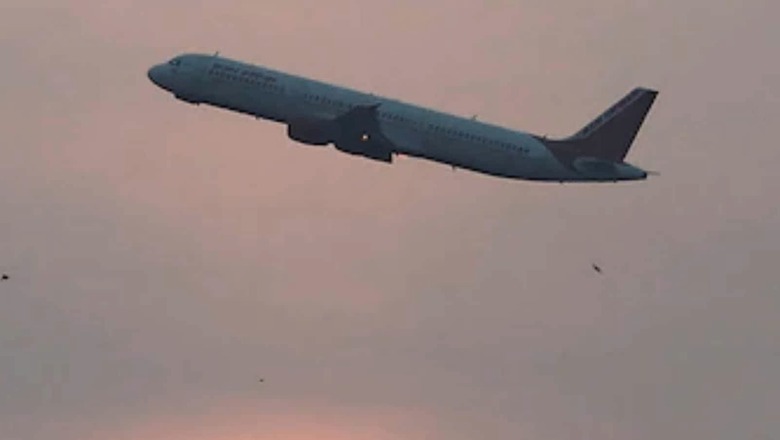
views
The Indian aviation community is abuzz with the news of a new airline being added to the fleet. Akasa airline has raised significant amount of funds, including a multi-crore investment by billionaire stock market investor Rakesh Jhunjhunwala. In a short span, the airline has appeared on everybody’s radar. Preliminary reports suggest a focus on the Ultra-Low Cost Carrier (ULCC) model and majority of aircraft to be based in Bengaluru with headquarters in Mumbai. Even so, given the state of the industry, people are asking: “Why start an airline? And why now in the midst of a pandemic?”
The Indian aviation market comprises six large airlines: IndiGo, SpiceJet, GoAir (now GoFirst), AirAsia India, Vistara and Air India. Of these, IndiGo and SpiceJet are listed in the stock market while GoAir has applied for the IPO. AirAsia India and Vistara have a majority ownership by the Tata group, and Air India is government owned. Of these airlines, four are based on a low-cost business model and are popularly referred to as low-cost carriers (LCCs). This model depends on selling seats at competitive prices and making profits with volumes. It aligns with what the Indian consumer demands and the proof is in the numbers. Over the last decade, the LCC model has seen explosive growth and low-cost airlines now command a market share that will soon touch 80%. During this time, the number of flyers have increased from under 60 million to 132 million before the Covid-19 pandemic. Mostly driven by low fares. Conversely, for any airline to succeed in a market like India one has to be competitive. This presumably will influence the business model for the new airline. In fact, it may go a step further to attempt an ultra-low cost model, which in turn would mean offering even lower fares than competitors towards stimulating demand.
Yet offering lower fares entails having even lower costs. This is made possible by extreme efficiency, by looking at each cost with a fine tooth comb, and by consistently improving on efficiency. Within the existing players, IndiGo perhaps does this the best because of its long-term planning and huge volumes. For a new entrant to enter this domain and compete head to head with IndiGo will be challenging to say the least. But what is encouraging is the weakness of competitors and this is the piece of which the new entrant can easily grab a large chunk.
Industry critics point to several questions and all the answers point to similarity with existing airlines rather than points of differentiation. These questions are best answered over time as the new airline matures. Of particular interest will be the network — or the routes that the airline will fly; the aircraft that will be chosen; the pricing strategy that will be used; the distribution channels that will be used; and the overall look and feel of the airline. In the background there is also the fact that we are in the midst of a pandemic where traffic levels have collapsed and price floors and capacity caps continue to be mandated by the government. The number of domestic travellers for the first half of 2021 is even lower than 2020 which saw the beginning of a lockdown. Load factors that indicate how many seats are occupied in each flight are in the 50%- 60% range and that too after flights have been combined. Complaints are going up and complexities such as reaching the airport early, having an RTPCR for several destinations and challenges with refunds are only growing.
Moreover, Jet Airways is also attempting to revive. And then there is the elephant in the room – namely the sale of Air India. In such a situation, the addition of a new airline is likely to be vehemently opposed by incumbents but will be a boon for travellers.
ALSO READ | For India’s COVID-hit Airlines, the Flight Path Continues to be Turbulent
Critics and consultants have varying views but these are also influenced by their own biases. Onlookers are best advised to heed the fact that India’s airline market is a paradox. The country has witnessed large airline losses yet it is also home to one of the most profitable airlines; macro-economic woes continue yet scenes of people travelling unabated, a pandemic notwithstanding, are a reality; the national airline is witnessing its second attempt at divestment which is significantly delayed; Jet Airways, once an extremely strong carrier, is waiting to emerge from bankruptcy; and several of the incumbents continue to fly in spite of defaults of various kinds. A new entrant in this mix is a paradox and not easily explained in binary terms. It is a good idea and a not so good idea both at the same time. And the real proof is in the execution not in debate.
What a new entrant does mean is additional choice, additional competition and additional avenues for talent. If the new airline is able to differentiate itself enough it may also mean an additional business model. Overall, the Indian aviation scene continues to be one with surprises and shocks and whether the new airline on the horizon will do the former or the latter remains to be seen.
Satyendra Pandey is the Managing Partner at aviation services firm AT-TV. The views expressed in this article are those of the author and do not represent the stand of this publication.
Read all the Latest News, Breaking News and Coronavirus News here.


















Comments
0 comment